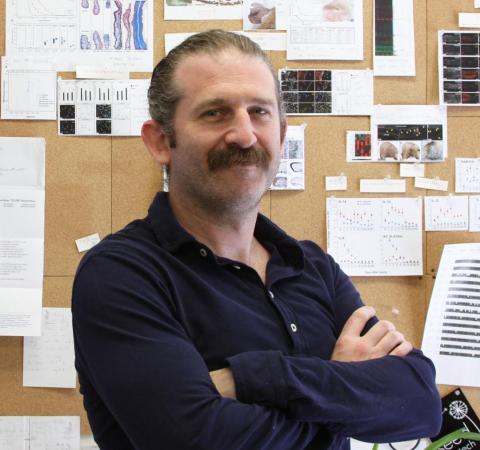Research projects in my laboratory are united in trying to understand the developmental mechanisms regulating organogenesis and regeneration. Patterning, growth, and cellular differentiation are integrated in both processes, but it remains largely unknown if regeneration recapitulates development or comprises its own unique program in response to injury. Research in the lab utilizes multiple animal models to understand how injury stimulates a regenerartive response in some contexts while in others the result is fibrosis (scarring) and failure to regenerate. The ultimate goal is to understand how tissue regeneration occurs in a natural biological context and use this understanding to inform the development of regenerative therapies for use in human medicine.
Research projects in the lab are presently focused in three tissue systems (skin, ear and limb):
Tissue Regeneration in deomyid rodents: It is generally accepted that mammals have lost much of the regenerative capacity that lower vertebrates enjoy. Alternatively, the capacity to regenerate damaged tissue may be suppressed, locked away in favor of mechanisms that promote rapid and efficient wound healing. A key area of research in the lab focuses on the ability of spiny mice (Acomys) to regenerate their skin and musculoskeletal tissue of the ear pinna. Our work has found that spiny mice have incredibly weak skin, so weak in fact that very small amounts of tension loaded rapidly induces tearing. In response to such tearing spiny mice display an ability to regenerate hair follicles in the wound bed, something most mammals fail to do in response to injury. Perhaps even more exciting is the ability of these mice to heal large circular ear holes by regenerating skin, hair follicles, dermis, nerves, muscle fibers and cartilage. While it has been known for some time that rabbits are capable of the same fantastic feat, the wealth of resources available for work in rodents makes this a tractable system for future study. As re-emergent interest in regenerative medicine seeks to isolate molecular pathways controlling tissue regeneration in mammals, Acomys is proving useful in identifying mechanisms to promote regeneration in lieu of fibrotic repair.
Beyond spiny mice, we are also interested in the breadth (or restriction) of regenerative ability among rodents. Thus, we use a phylogenetic approach to assess tissue repair in different murid rodents. This line of research takes us to the field, and we work closely with our Kenyan colleagues at the University of Nairobi in this endeavor. Thus far, we have identified enhanced regeneration in a number of species and now have the unique opportunity to test our mechanistic hypotheses for how regeneration evolves in mammals.
Immunobiology of regeneration: A longstanding question in regeneration biology centers on whether the mammalian immune system constrains regenerative capacity in terrestrial vertebrates. We can now use the natural variation we observe in Acomys to test if immune trade-offs lead to observed variation in regenerative ability within Acomys species (in terms of rate and quality) or across species (can or cannot regenerate). We continue to address the hypotheses that trade-offs in immunity along (1) innate vs. adaptive and (2) pro vs. anti-inflammatory axes underlie variation in the ability and rate of regeneration between regenerating and non-regenerating rodent species. This research also takes advantage of the substantial genetic resources developed for the laboratory mouse and is part of an ongoing collaboration with Dr. Stephen Kiama at the University of Nairobi. In addition to testing this more general hypothesis, our work focuses on understanding how macrophages, a key immune cell type, may or may not specifically regulate regeneration. We have shown that macrophages are required for the earliest phases of regeneration in Acomys and are beginning to disentangle how macrophage subtypes specifically control blastema formation.
Evolution of Regenerative Ability: Given the uneven distribution of regenerative ability among metazoans, how this pattern emerged remains an open question. An intriguing possibility is that certain components or processes that occur during tissue regeneration are prerequisites for tissue rebuilding no matter the species. When it comes to studying regeneration, my general philosophy is "the more the merrier". Thus, our research is not limited to studying tissue repair and regeneration in a single species and the lab consistently supports projects across an array of organisms. While our work does tend to concentrate on mammals, current projects in the lab also focus on regeneration in corals.
Limb and Skin Development in Salamanders: This line of research is focused on understanding how the skin and limb develop in salamanders. Although the development of these systems are well understood in amniotes, development of these organs is poorly understood in salamanders. Because salamanders are capable of regenerating their skin and limbs as adults, we have been investigating how these organs undergo normal development. This line of research allows us to better understand the degree to which organ development and regeneration share generalized programs.
For more information about the laboratory, people and projects visit the Seifert Lab Website.

